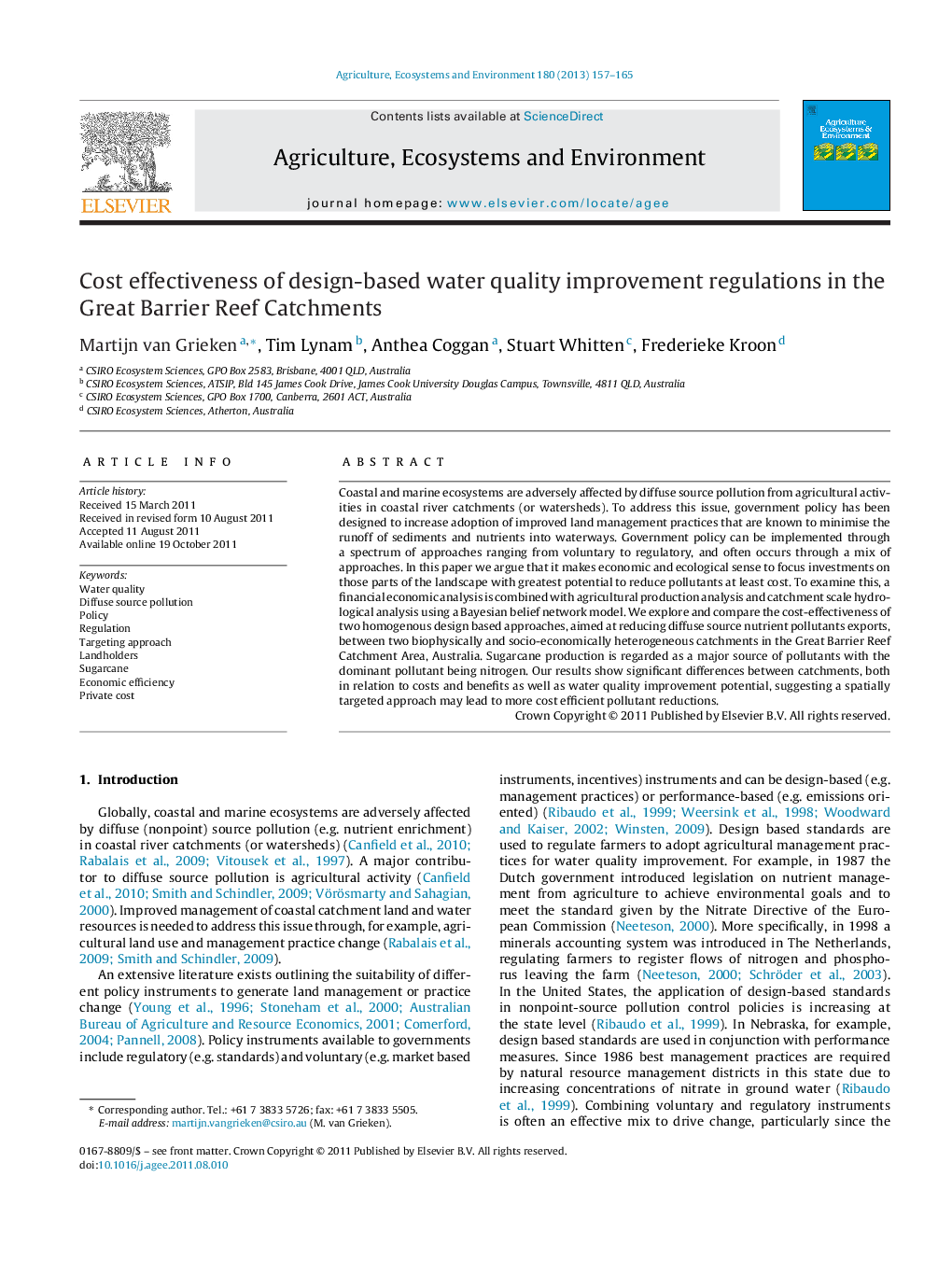| کد مقاله | کد نشریه | سال انتشار | مقاله انگلیسی | نسخه تمام متن |
|---|---|---|---|---|
| 2414104 | 1552072 | 2013 | 9 صفحه PDF | دانلود رایگان |

Coastal and marine ecosystems are adversely affected by diffuse source pollution from agricultural activities in coastal river catchments (or watersheds). To address this issue, government policy has been designed to increase adoption of improved land management practices that are known to minimise the runoff of sediments and nutrients into waterways. Government policy can be implemented through a spectrum of approaches ranging from voluntary to regulatory, and often occurs through a mix of approaches. In this paper we argue that it makes economic and ecological sense to focus investments on those parts of the landscape with greatest potential to reduce pollutants at least cost. To examine this, a financial economic analysis is combined with agricultural production analysis and catchment scale hydrological analysis using a Bayesian belief network model. We explore and compare the cost-effectiveness of two homogenous design based approaches, aimed at reducing diffuse source nutrient pollutants exports, between two biophysically and socio-economically heterogeneous catchments in the Great Barrier Reef Catchment Area, Australia. Sugarcane production is regarded as a major source of pollutants with the dominant pollutant being nitrogen. Our results show significant differences between catchments, both in relation to costs and benefits as well as water quality improvement potential, suggesting a spatially targeted approach may lead to more cost efficient pollutant reductions.
► A combined financial-economic, agricultural and hydrological analysis is performed.
► Cost-effectiveness of a regulatory approach is compared between catchments.
► A spatially targeted approach may lead to more cost efficient pollutant reductions.
► Focus investments on areas with greatest potential to reduce pollutants at least cost.
Journal: Agriculture, Ecosystems & Environment - Volume 180, 1 November 2013, Pages 157–165